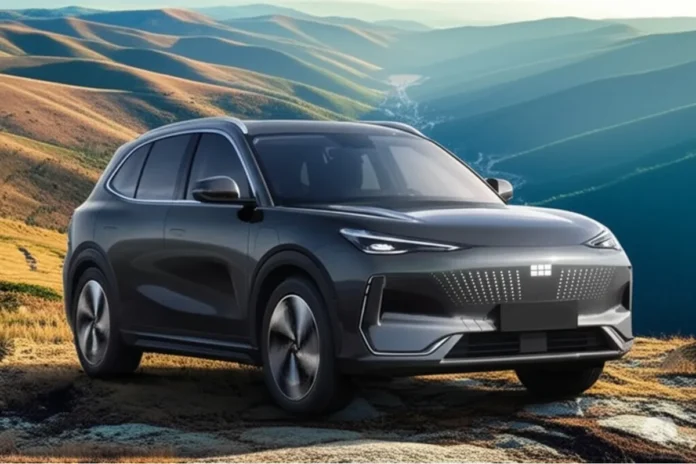An Evolving Electric Mobility Market
In recent years, the buzz around Chinese electric vehicles (EVs) has only grown louder—not least in Europe, where many stakeholders wonder if a full-scale invasion is underway. However, while headlines may incite a sense of urgency, the current dynamics suggest that the situation is far more nuanced than a straightforward takeover.
Multiple Chinese manufacturers are looking beyond domestic borders to establish a foothold in global markets. Although there are over 150 Chinese EV startups operating worldwide, only a handful have achieved sustainable profitability. Notably, BYD and Li Auto have emerged as trailblazers, while several others are forging strategies to boost their exports steadily. The debate is no longer whether Chinese EVs will make it abroad, but rather how these vehicles will reshape the competitive landscape in key markets—including Europe and, notably, the United Kingdom.
The Export Surge: Trends and Figures
Recent data reveals that Chinese EV exports have experienced notable growth since the start of 2025. According to recent statistics from the General Administration of Customs, global exports in the sector have increased by approximately 19% since January. While Chinese electric cars are among the visible success stories, the rise in export figures is not exclusively driven by them. In fact, other sectors such as construction equipment and industrial robotics have seen growth figures of 10.7% and 55.4%, respectively.
This broad picture of export performance hints at a highly competitive environment where EV manufacturers are only one part of a larger narrative—diversifying their portfolios and targeting emerging markets as much as established economies. For European markets, and for tech-savvy audiences in the UK, these changes offer both opportunities and fresh challenges as traditional players brace for increased competition from the East.
Market Leaders: Who Is Making Strides?
When it comes to exporting electric vehicles, certain brands are leading the charge. Chinese automotive titan Chery now boasts exports of roughly 250,800 units worldwide, far outpacing many of its counterparts on a global scale. Even if Europe represents only a fraction of the overall numbers, these figures underscore the rapid ascent of Chinese EV manufacturers on the international stage.
In second place is MG—a brand under the SAIC umbrella—which has recorded exports around 168,700 units. MG’s popularity, especially in Europe, is evident through the surge of models like the MG4, which have garnered significant traction among European buyers. Despite regulatory measures taken by European authorities to stimulate domestic production and limit excessive imports, the appeal of advanced Chinese EVs remains strong.

Below is a simplified overview of the export performance of the top players:
| Brand | Global Units Exported | Notable Market Presence |
|---|---|---|
| Chery | 250,800 | Widely distributed worldwide |
| MG (SAIC) | 168,700 | Strong showing in Europe, especially in the UK |
| BYD | – | Leading profit-maker domestically and abroad |
| Li Auto | – | Profitable, setting industry benchmarks |
Table 1. Key figures illustrating the global export performance of notable Chinese EV manufacturers.
Regulatory Hurdles and Market Realities
In light of the increasing export figures, many European policymakers have expressed concerns over the potential disruption posed by a surge of Chinese EV imports. Brussels, in particular, has taken steps to counterbalance this trend by imposing higher tariffs on vehicles manufactured in China. The European Commission’s proactive measures aim to ensure that local industries are not marginalized and that imports do not tip the competitive scale entirely in favor of foreign players.
However, the notion of an imminent “invasion” is far from the reality on the ground. At present, Chinese electric vehicles maintain a modest market share in Europe. Despite the ever-growing export volumes, European sales figures remain relatively limited. Analysts emphasize that it will likely take years—even decades—for these trends to result in any significant market penetration that could fundamentally alter the automotive landscape.
This regulatory tussle reflects a broader challenge: balancing the benefits of cutting-edge, competitively priced technologies with the need to nurture domestic manufacturing and protect local employment. For UK consumers and stakeholders, this means that while fresh choices in the EV market are emerging, they come bundled with broader economic and policy considerations.
Implications for the UK and European Markets
For a UK audience invested in technology and electric mobility, the rise of Chinese EVs represents both a potential boon and an area for cautious observation. On one hand, consumers may benefit from access to feature-rich, competitively priced vehicles. On the other, the long-term industry implications call for a careful review of trade policies, manufacturing strategies, and the essential support for innovation within the local market.
In the UK, where governmental initiatives have long supported the shift toward cleaner and more efficient transport solutions, the appearance of advanced EVs from China could accelerate consumer adoption of green technology. Nevertheless, local industry advocates warn against complacency, urging for continued investment in domestic research and development to ensure that the country remains at the cutting edge of automotive innovation.
From a business perspective, established players and new market entrants alike can learn from the rapid scaling methods employed by Chinese EV manufacturers. Their effective integration of advanced technologies, dynamic export strategies, and global marketing approaches offers valuable lessons for the broader automotive ecosystem.
Future Outlook and Strategic Considerations
Looking ahead, the trajectory of Chinese EV exports will likely continue upward momentum, albeit with the caveat that market penetration in Europe, and particularly in the UK, will be a gradual process. The interplay of export growth, tariff policies, and evolving consumer preferences sets the stage for a meticulously balanced competition between imported vehicles and native brands.
For technology enthusiasts, industry experts, and policy strategists, the evolving narrative of Chinese electric vehicles is a compelling study in modern global commerce and industrial strategy. The progress of brands such as BYD, MG, Chery, and others is redefining the traditional boundaries of the automotive marketplace—and challenging long-held assumptions about quality, innovation, and competitive pricing in the electric mobility revolution.
In practical terms, this offers UK investors and consumers alike an incentive to keep an informed eye on the market. As European automotive policies continue to adapt to new competitive realities, stakeholders will be better positioned to make decisions that balance cost, quality, and environmental impact. The key, as always, is staying agile and embracing innovation while ensuring that local industries are not left behind in the global race toward sustainable mobility.
Conclusion
The narrative surrounding Chinese electric vehicles in Europe is evolving, with export growth promising a richer selection for consumers but leaving regulators and domestic manufacturers to navigate a challenging transition. Although fears of an outright invasion remain largely unfounded today, the steady rise of key brands like MG and Chery signals a future where Chinese EVs will become an even more integral part of the European—and UK—market landscape. Under the vigilant eye of policymakers and industry leaders, this transformation could herald unprecedented opportunities for innovation and competition in the green transport sector.
For those keen to explore further, the trends, tariff debates, and technological breakthroughs in electric mobility remain pivotal for anyone passionate about the future of transportation.




